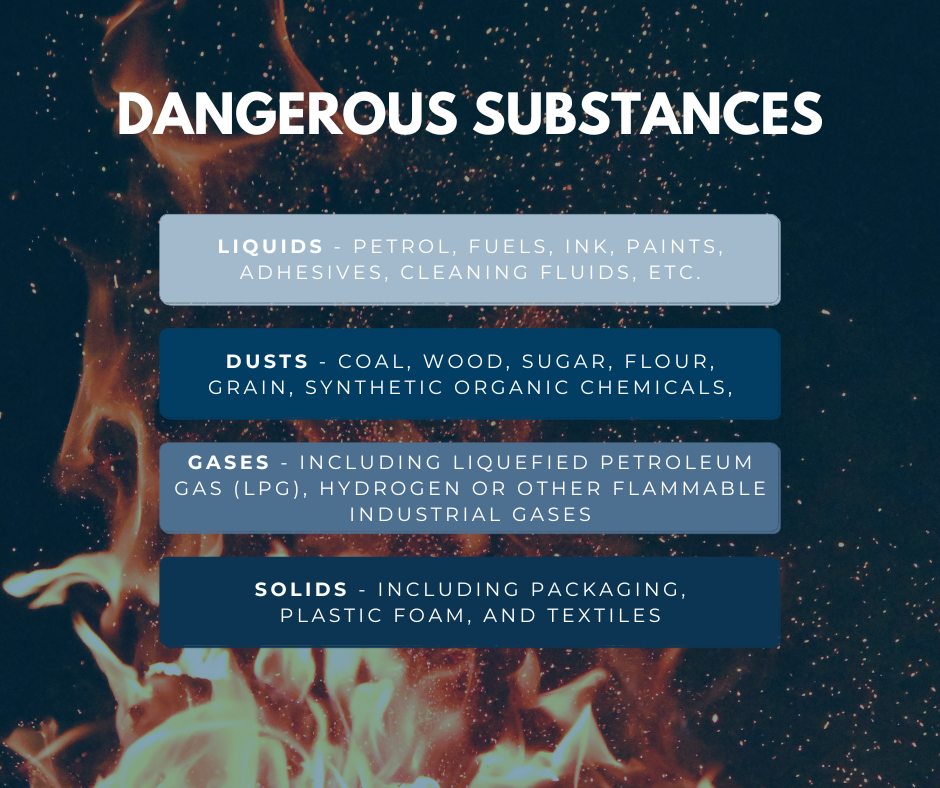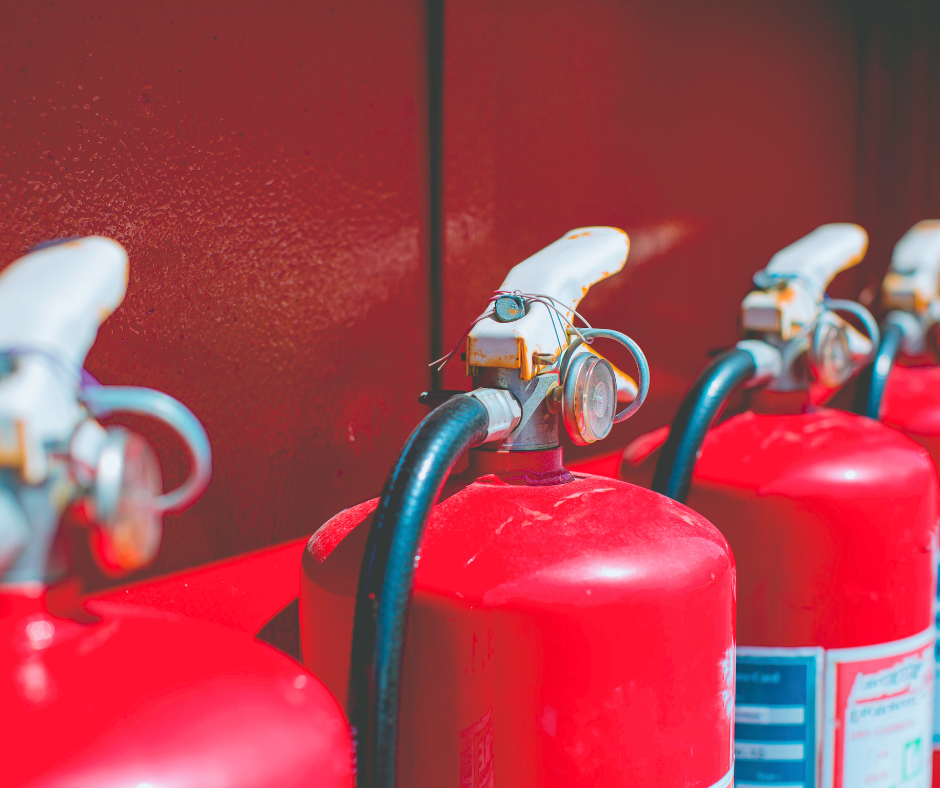As part of September’s Hazard of the Month, Fire, we’re highlighting two key areas: Fire Safety and Fire Wardens.
Fire Safety
 Work involving flammable substances—such as gases, vapours, mists, or combustible dusts—poses a significant risk of fire or explosion when these materials mix with air and are exposed to an ignition source. Such incidents can result in serious harm to people, extensive property damage, environmental harm, and business disruption.
Work involving flammable substances—such as gases, vapours, mists, or combustible dusts—poses a significant risk of fire or explosion when these materials mix with air and are exposed to an ignition source. Such incidents can result in serious harm to people, extensive property damage, environmental harm, and business disruption.
To reduce these risks and maintain a safe working environment, it’s essential to implement effective preventive measures. These include proper storage, adequate ventilation, and comprehensive employee training.
Flammable and combustible substances that can lead to fire or explosion come in various forms:
- Liquids – Examples include petrol, fuels, inks, paints, adhesives, and cleaning agents.
- These release vapours that can ignite or explode when mixed with air.
- Dusts – Common types include coal, wood, sugar, flour, grain, synthetic organic chemicals, and certain metals.
- These may be raw materials, intermediate products, finished goods, or waste, and are found in industries such as food and animal feed production, chemical manufacturing, woodworking, plastics and rubber processing, and metalworking.
- When suspended in air, combustible dust can form explosive clouds if an ignition source is present.
- Gases – Such as liquefied petroleum gas (LPG), hydrogen, and other flammable industrial gases.
- Typically stored under pressure, accidental releases can quickly lead to fire or explosion if ignited.
- Solids – Including materials like packaging, plastic foams, and textiles.
- These can burn intensely and produce thick, and sometimes toxic, smoke.
Learn more about fire hazards and how to control them with our Fire Safety Online Training Course. Get 10% off this course with the code ‘fire10’!
Fire Wardens
 One of the key responsibilities of a fire warden is to understand the various types of fires and the appropriate equipment required to tackle them. There are several types of firefighting tools available, each suited to specific fire classes and scenarios. These include, but are not limited to:
One of the key responsibilities of a fire warden is to understand the various types of fires and the appropriate equipment required to tackle them. There are several types of firefighting tools available, each suited to specific fire classes and scenarios. These include, but are not limited to:
-
Water Extinguishers – Suitable for fires involving organic solid materials such as wood, paper, cloth, plastics, and coal (Class A fires).
-
Water Spray Extinguishers – Also for Class A fires, but with enhanced firefighting capabilities compared to standard water extinguishers.
-
Water Mist (De-Ionised Water) – Versatile extinguishers suitable for Class A, B, and C fires, small amounts of burning fats, and some electrical fires.
-
Powder Extinguishers – Suitable for fires involving organic solids and flammable liquids (e.g., grease, oil, petrol, paint), but not recommended for chip pan or fat fires.
-
Dry Powder (Specialist Powder) – Designed for fires involving combustible metals, such as magnesium or titanium.
-
Foam Extinguishers – Effective on fires involving solids and flammable liquids, but unsuitable for cooking oil or fat fires.
-
Carbon Dioxide (CO₂) Extinguishers – Ideal for fires involving live electrical equipment. Caution is advised in confined spaces due to risk of asphyxiation.
-
Wet Chemical Extinguishers – Specifically designed for Class F fires, involving cooking oils and fats, such as in deep-fat fryers.
-
Fire Blankets – Used to smother small fires, particularly effective for kitchen fires or fires on clothing.
-
Hose Reels – Typically used for Class A fires (organic solid materials). Provide a continuous water supply for extended firefighting.
-
Fire Buckets – Usually filled with water or sand. Can be used as a first response to Class A fires or in situations where extinguishers are not immediately available.
Anyone expected to use a fire extinguisher should be familiar with the types available in their workplace and know which fire classes each one is suited for. Using the wrong extinguisher can worsen a fire or create serious safety hazards.
Learn more about Fire Warden responsibilities with our Fire Wardens online training course. Get 10% off this course with the code ‘fire10’!

Fire Safety and Fire Wardens training courses are essential tools in protecting your workers from the risk of fire. Make sure you don’t miss out on our 10% off deal on these courses, available until the end of September. Simply enter the code ‘fire10’ at checkout to save!
Read more Safety Spotlight blogs here
To keep up to date with the latest health & safety news and advice, follow us on social media:
